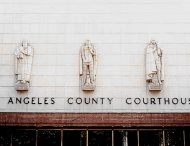3/23/2011
California: Los Angeles Court Defends Red Light CamerasAppellate division in Los Angeles County, California stands against five counties to defend photo ticketing.

A Los Angeles County, California court last month distanced itself from judicial colleagues in defending the use of red light cameras. A three-judge appellate division panel on February 14 upheld the validity of photo ticketing despite the contrary holdings of the appellate division in Alameda, Kern, Orange, San Bernardino and San Mateo counties.
"In affirming the judgment, we acknowledge the appellate division of the Orange County Superior Court has held that claims similar to those addressed in part III.A. warrant reversal of the judgment," Los Angeles County Judge Sanjay T. Kumar wrote. "We respectfully disagree with Khaled. As explained below, it is our view that photographs taken by an Automated Traffic Enforcement System may be admissible even if the testifying officer was not a percipient witness to the violation and was not personally responsible for setting up the camera."
The Orange County court's Khaled decision (view case), whose publication was endorsed by the state's second highest court, argued that defendants were denied their right to cross-examine the evidence against them when the only live witness is a police officer who has no direct knowledge of anything related to the alleged offense. The US Supreme Court's Melendez-Diaz case reiterated the importance of the Confrontation Clause when considering evidence in a criminal case. Without a sufficient foundation, the Orange County court found the evidence in a automated ticketing case to be inadmissible hearsay. The Los Angeles judges argued that it did not matter that the officer lacked direct knowledge.
"The officer provided expert testimony regarding the operation of the ATES and the photographs it produces based on information he had from city traffic engineers and Redflex as well as his experience with images obtained from the cameras," Kumar wrote. "The data bar affixed to the bottom of the photographs was not hearsay, insofar as it was not inputted by a person but, rather, was generated by the ATES once the system's sensors were triggered by appellant. The purpose of the hearsay rule is to subject the declarant to cross-examination in order to bring to light any falsities, contradictions, or inaccuracies that may not be discernible in the declarant's out-of-court statement."
The Los Angeles judges affirmed the conviction of the motorist who had challenged her ticket. Out of each $440 red light camera ticket collected, the Los Angeles County court system receives a $42.90 cut, generating millions a year in revenue.
A copy of the decision, courtesy of highwayrobbery.net, is available in a 100k PDF file at the source link below.


